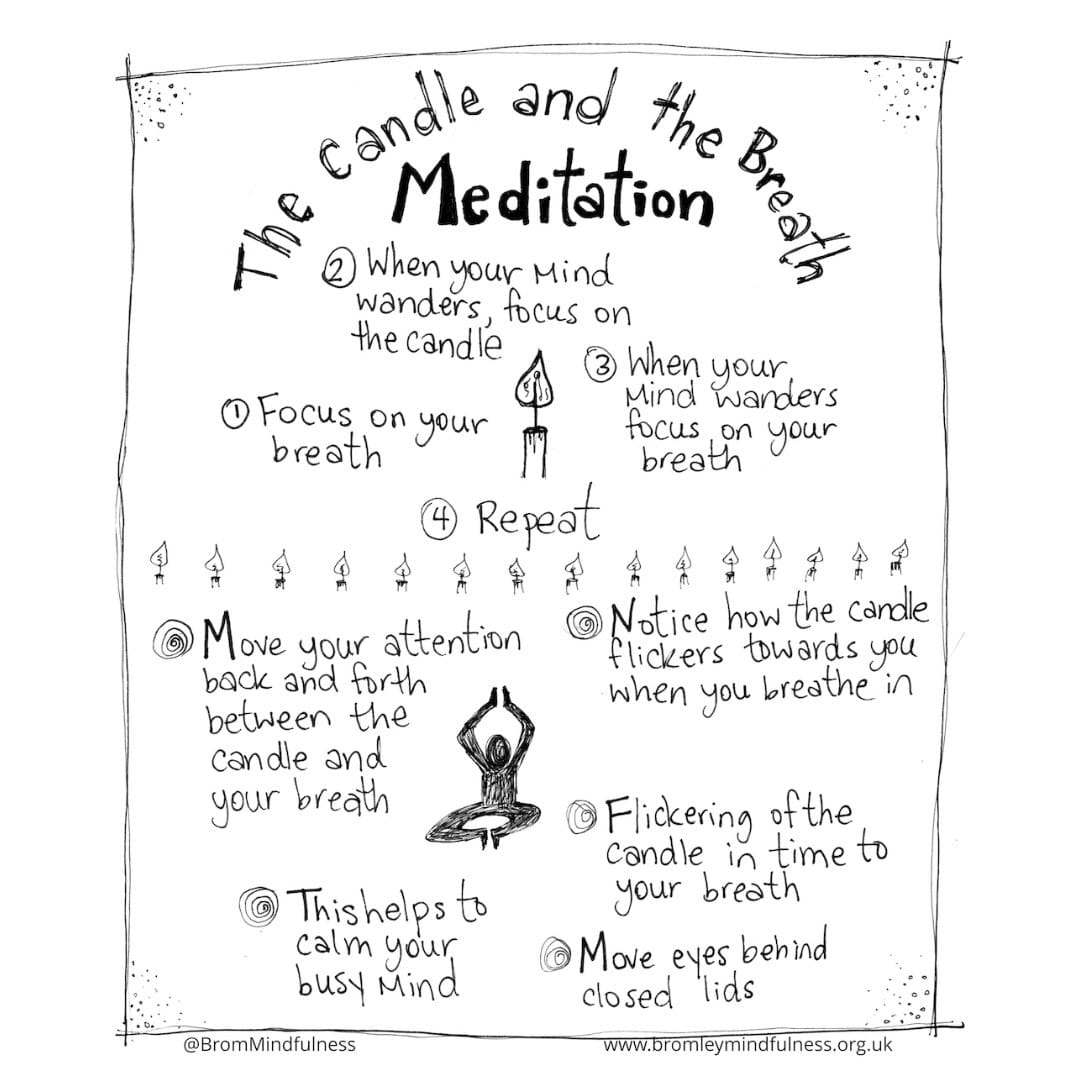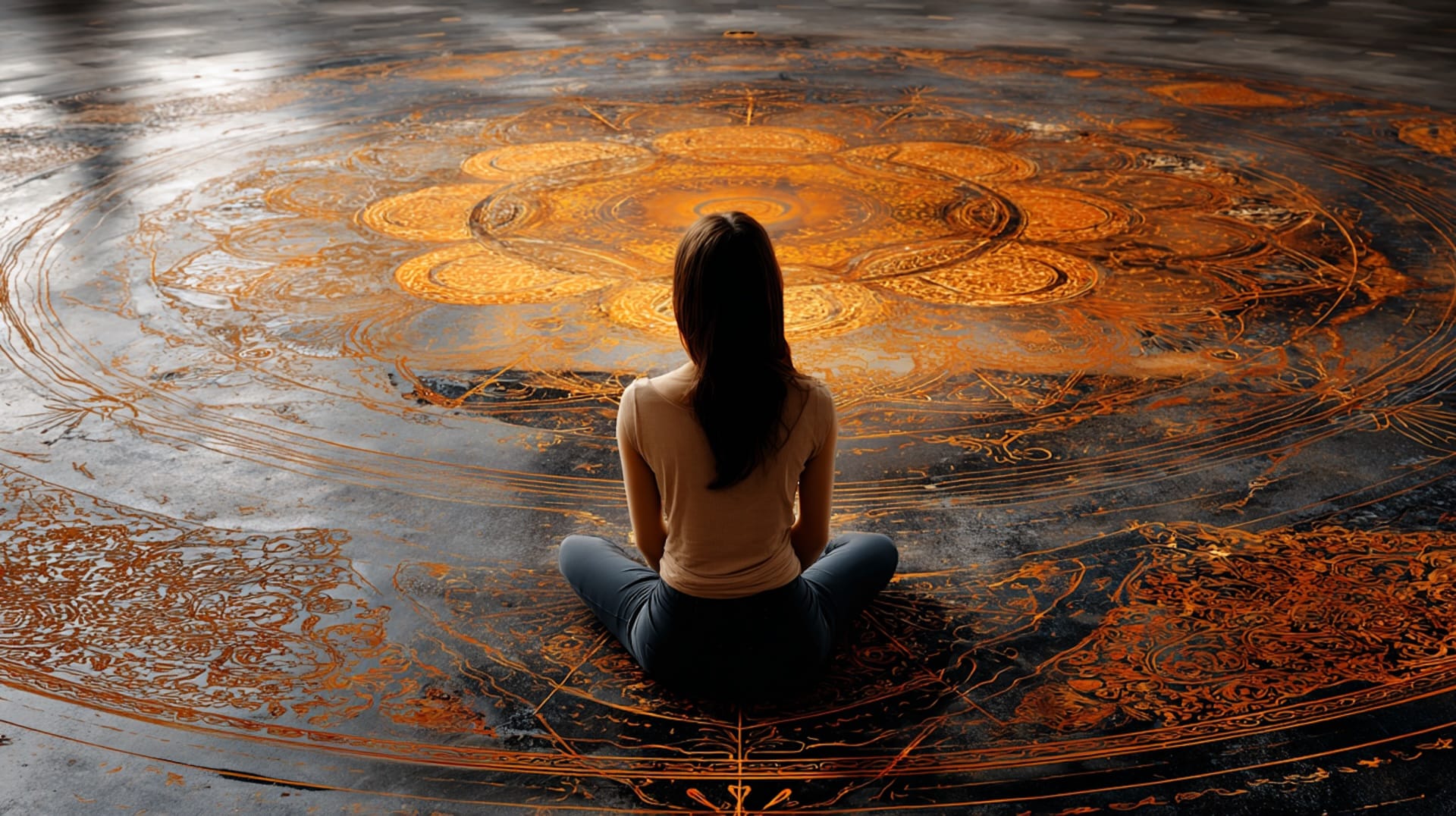Welcome to the weekly insights for Sunday, the 9 November.
I post a Weekly Insights article each week. Each article is a roundup of the insights that I've posted the previous week across all my social media platforms. Each insight is a micro-learning post that offers practical guidance in mindfulness, meditation, and resilience.
Weekly Insights For This Week
- Single-Point Focus — The Path to Presence
- The Four Types of Focused Attention Meditation
- The 7th and final post of the 'What Changes with Meditation?' Series – Anxiety
- Shift Happens Post 1. - The Mental Model That Runs Your Life And How Meditation Lets You See It.
- Mindfulness and Choice
- 🕯️ The Candle & The Breath Meditation 🕯️ - a meditation for very busy minds

Single-Point Focus
The Path to Presence
How to train yourself in Presence (Mindfulness)?
Practice focused attention (single-point) meditation.
It’s as simple as this:
Pick one point — and keep returning to it.
That’s the practice. We expect the mind to wander as we train ourselves to notice when it does.
We want to be aware of mind-wandering throughout the day so we can return to presence and make conscious choices about our actions, what to focus on, and how to use our minds.
We can then choose conscious awareness over an endless conveyor belt of tasks and activities accompanied by a repetitive inner narrative.
Whenever I guide a focused-attention meditation, I am consciously aware that I am teaching the practice described in the ancient Hindu text, the Bhagavad Gita, written over 2,000 years ago.
“Holding the body, head, and neck erect and still, gazing at the tip of the nose…”
— Bhagavad Gita 6.13–14
The Gita’s message is clear:
- Focus the mind on a single point.
- When the mind wanders,
- Return the attention to the single point.
“Whenever the mind wanders, bring it back under the control of the Self.”
— 6.26
Each time we notice the mind has wandered, we are one step closer to remaining present in our day.

The Four Types of Focused Attention Meditation
Mindfulness meditation isn’t about stopping or silencing thoughts — it’s about training our subconscious, through gentle repetition, to return to a single point, in the present moment, over and over again. This is how we release our attention from any narrative our mind has chosen to spin.
Here are the four simple ways to do that 👇
1️⃣ Focus on the Breath
Your breath exists in time and space — rising and falling like a wave.
Notice it moves up on the in-breath and down on the out-breath.
The breath is your on/off switch for stress and presence. 🌬️
2️⃣ Focus on Sound
Listen to a bell fading away, or sounds in your environment.
Follow each sound as it moves through time — surf it like a wave. 🎵
Each moment of hearing anchors you in now.
3️⃣ Visual Focus
Choose one thing to look at — a candle, a leaf, a mandala. 👁️
Stay with that single point, and notice what changes.
Each time your mind wanders, gently return.
4️⃣ Focus on a Mantra
Repeat a word or phrase in your mind —
like “May I be well. May I be happy. May I find peace of mind.” 🕊️
The mantra gives your busy mind a calm rhythm to follow.
✨ The Practices
In all four:
- There’s one single point in time and space.
- Your mind will wander — that’s the practice.
- Notice and return to the single point.
🌿 Each return to focus builds presence — one breath, one sound, one word at a time.
The Final Episode of the 'What Changes with Meditation?' Series 7. - Anxiety
Anxiety is the mind rehearsing danger.
Meditation retrains our subconscious to identify and intervene in this danger rehearsal.
When we meditate, the amygdala (the brain’s alarm system) calms down, and the prefrontal cortex—the part that helps us regulate emotions—becomes more active. (Many studies have confirmed this.)
Over time, this rewiring means:
✨ Fewer anxious thoughts
✨ Calmer responses
✨ A focused and relaxed present moment
You don’t have to battle with anxiety.
With patient practice, you can teach your mind to find and maintain calmness.
💚 Meditation changes how your brain responds to stress and anxiety.

Shift Happens Post 1.
The Mental Model That Runs Your Life And How Meditation Lets You See It.
We all see the world through a personal Mental Model, an invisible filter that shapes how we think, feel, and respond to life.
Most of the time, we don't see it.
Like a fish that doesn't know it's in water.
Meditation changes this.
This shift — from being your thoughts to observing your thoughts — is often called witness consciousness among meditators. Science refers to this as meta-awareness (Awareness of awareness).
And when this shift happens:
- You stop believing every thought you have
- You start to notice your internal mental habits and patterns
- You realise you are not your thoughts; you are the observer of the thoughts
- Most importantly, instead of acting out learned habits and unconscious patterns, you can make conscious choices. These are better choices.
This is how real change happens: simply by becoming aware of the unconscious model that's been running the show.
The only essential ingredient is patience.
When you do let go of your old unconscious patterns of thought and behaviour, everything changes - for the better.
💚 Start noticing the mind. The rest follows.

Mindfulness and Choice
In one of this week's meditation classes, we explored something slightly different: focusing on how our awareness notices when it's drawn into mental movies and inner narratives, and then returns to presence (mindfulness) —this realisation that we are on autopilot is known as the moment of recognition.
Practising mindfulness meditation trains our subconscious to notice when our mind has wandered, then returns us to conscious awareness and presence, allowing us to make a conscious, aware choice for our next action or focus.
By returning to presence, one has choice. Do I allow my mind to return to what it was engaged in when I was mind-wandering? Or do I choose to keep my mind calm? Or do I choose to focus on something else, maybe something more useful? One of the greatest benefits of meditation is the gift of choice: how we focus our mind, how we act, what we choose to be aware of, and what we choose to experience.
We're replacing the autopilot with presence through gentle repetition of meditation.

🕯️The Candle and The Breath Meditation 🕯️
A meditation for very busy minds.
This is a meditation that I devised. It uses two focal points to steady the mind, and we gently move our attention between them.
The Candle
- Close your eyes and *visualise a candle, eye height, and at arm's length* in front of you.
- If the image is faint or keeps collapsing, that’s totally fine. Just rebuild it gently.
- If you’re visually strong, add *detail*: wax dripping, warm glow, flicker, the holder, the shape of the flame.
- Stay focused on the candle for a few breaths.
Then gently move your attention to your breath.
The Breath
- Focus on the sensation of the breath.
- Focus wherever the breath feels most noticeable: nostrils, chest, belly,
- The coolness of the in-breath and the warmth of the out-breath.
- The rising and falling of the belly.
- Immerse yourself in the sensation.
2. Stay focused on the breath for a few breaths.
Then gently move your attention back to the candle.
Repeat this movement of your attention, moving from the candle to the breath and back, always staying one step ahead of your busy monkey mind. 🙈
I suggest 5 to 15 minutes.
If you enjoyed the Weekly Insights Post, subscribe for free to get it posted directly to your inbox.

